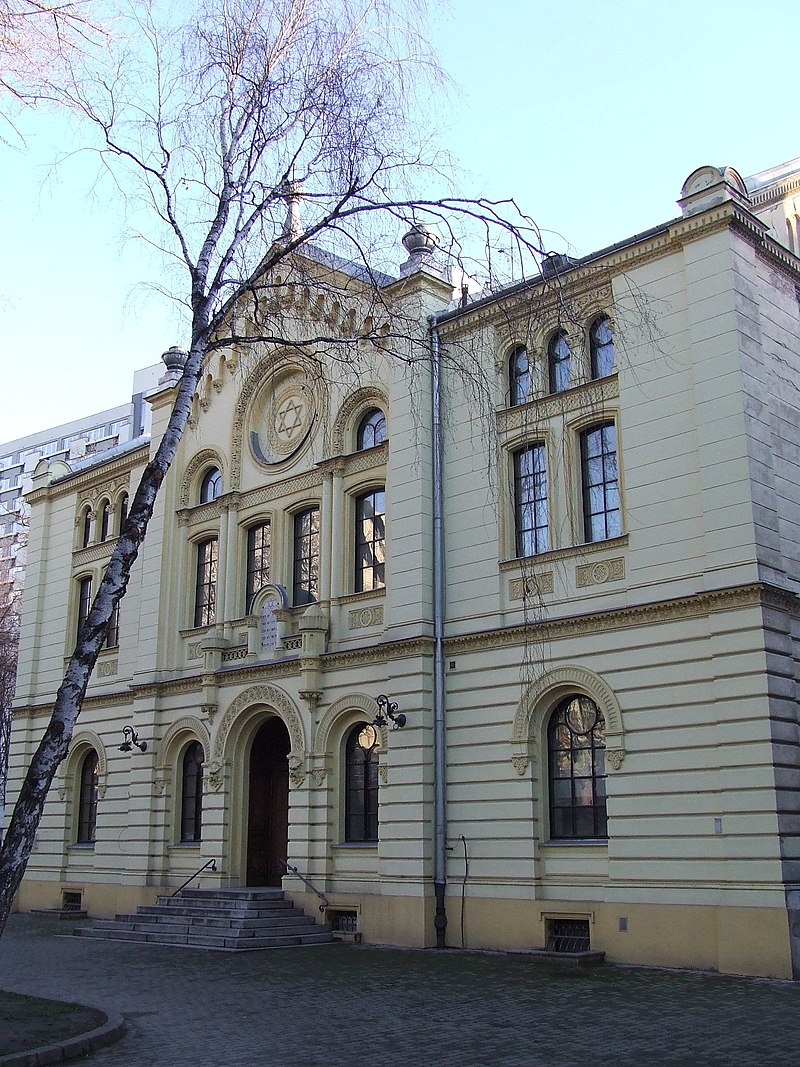I need to take a break from describing mass murder sites, so here’s a more uplifting story from my travels in Poland.
To be sure, for a Jew, a visit to Poland is going to focus a lot on loss. Each place you visit has its Holocaust story. (I never liked the word “story” to refer to actual events, especially traumatic ones, but I’m not sure the English language has a better one.) The losses are so overwhelming that it can become nearly impossible to focus on anything else.
And yet, as human beings, we are, I believe, programmed to notice and grab onto glimmers of light and hope, even if they are so slight as compared to the immensity of the darkness. I mentioned in a previous post the feeling that, as I stood among Jews making havdalah at a synagogue in Krakow, that some light still remained. (See http://zambrow.blogspot.co.il/2015/08/to-distinguish-between-dark-and-light.html) There are remnants. To some it may seem a pathetic remnant, too small to be taken seriously. The Polish Jewish community is tiny, numbering perhaps in the thousands. There are probably more Jews living my section of the Bronx today than in all of Poland today. The chances of any substantial Jewish life developing in Poland are not great, given that any Polish Jew who wants to experience a meaningful Jewish life will probably have to leave Poland and move either to Israel or the United States.
Yet there were glimmers of hope. The first occurred on my first morning in Warsaw. My hotel was located not far from a synagogue that I learned was still active called the Nyzyk, or new, Synagogue. It was damaged like most of Warsaw during the war, but, unlike the Great Synagogue in Warsaw, it was not destroyed. The Nazis used the synagogue as a stables for horses and a depot for supplies. (For a more information on its history, see http://www.sztetl.org.pl/en/article/warszawa/11,synagogues-prayer-houses-and-others/5,nozyk-synagogue-twarda-street-6/) Here is what the synagogue looks like today:

At the back of the synagogue was a plaque that attested to its very existence as the “only synagogue to survive the war”:
I first went to the synagogue on Wednesday afternoon. There was no one there except a security guard. We asked if the synagogue had evening services. He said there were and to come back around 8:30. However, when we came back at this time, no one was there. The guard told me that morning services were at 7:00 a.m.
When I arrived the following morning at that time, there was only one other person there. I waited around for others to arrive and when no one did, I began praying on my own. However, between 7:20 and 7:30, a few men started to trickle in, including Rabbi Michael Schudrich, who I recognized as being the Chief Rabbi of Poland. Eventually enough people showed up so that there was a minyan (quorum of 10), which meant that, it being a Thursday, the Torah would be taken out and the Sabbath parsha (portion of the week) read.
When the time came to read from the Torah, a young man wearing a felt kippa went up to the bima (prayer stand) to read the Torah portion. His Hebrew was heavily Polish accented and he read in a somewhat halting, but nevertheless competent, manner.
Afterward the service, I spoke with Rabbi Schudrich, who explained that the man had recently learned from his mother that she, and therefore he, was Jewish. He then approached Rabbi Schudrich and began learning Hebrew and Jewish rituals. In two days, on the Sabbath, he was going to have a Bar Mitzvah. Usually Jewish boys have a Bar Mitzvah when they reach the age of 13, but here this young man, already in his 20s, had chosen to join the Jewish community and celebrate a rite of passage that marks the entry into Jewish adulthood. I spoke with the young man and wished him a mazal tov. (He didn’t want me to take a photograph of him.) I then walked back to my hotel, my first morning in Poland, a witness to a spark of hope amidst the darkness.